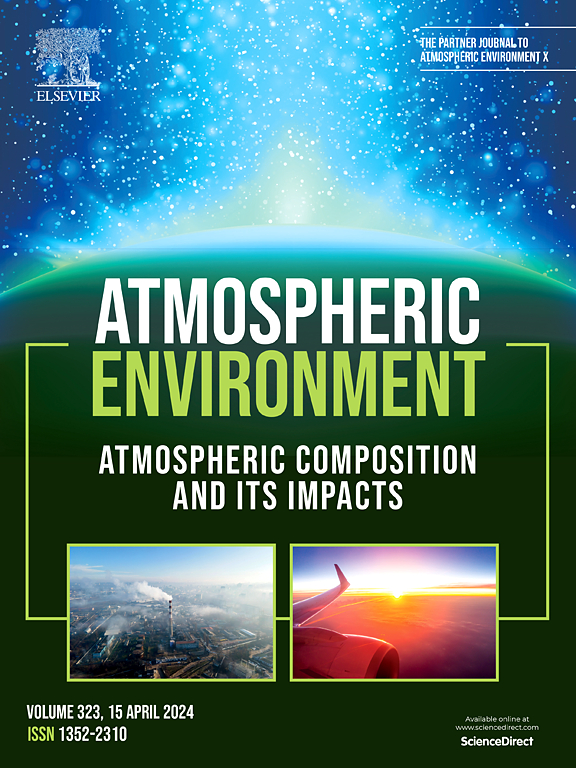棕色碳的水光化学:H2O2的形成,SO2氧化的增强,以及激发三重态的真实作用
IF 3.7
2区 环境科学与生态学
Q2 ENVIRONMENTAL SCIENCES
引用次数: 0
摘要
现场观测显示,中国雾霾期间H2O2水平升高,硫酸盐产量增加,但迄今为止,已知的H2O2来源和传统的二次硫酸盐形成机制无法解释这些现象。近年来,大气光敏多相氧化SO2引发硫酸盐生产的研究备受关注。然而,关于三态激发态及其在光敏反应中形成的次生活性氧(ROS)对硫酸盐形成的贡献的报道很少。本研究进一步研究了水溶性腐殖质样物质(HULIS)的水光化学反应。结果表明,在313 nm的紫外照射下产生羟基自由基和过氧自由基,同时产生H2O2。研究了HULIS光敏化对SO2氧化的影响。结果表明,HULIS (3HULIS∗)的三重态激发态不能直接有效地氧化SO2生成硫酸盐,但在O2和氢原子供体(如HULIS本身)存在的情况下,3HULIS∗在二级反应中生成ROS,从而实现了硫酸盐的氧化。这些发现澄清了被误解的3HULIS *在SO2光敏氧化中的作用,并且该研究有助于更好地理解大气光敏过程。本文章由计算机程序翻译,如有差异,请以英文原文为准。

Aqueous photochemistry of brown carbon: H2O2 formation, enhanced SO2 oxidation, and the real role of excited triplets
Field observations highlight high H2O2 level and enhanced sulfate production during haze episodes in China, but so far, the known H2O2 sources and traditional secondary sulfate formation mechanisms cannot elucidate these phenomena. In recent years, the atmospheric photosensitized multiphase oxidation of SO2 to trigger sulfate production has attracted great attention. However, few reports on the contributions of triplet excited states and its secondary reactive oxygen species (ROS) formed in photosensitization reaction to sulfate formation. In this study, the aqueous photochemistry of water-soluble humic-like substances (HULIS) proxy was further investigated. It was found that hydroxyl radicals and peroxyl radicals were produced after 313 nm UV irradiation, accompanied by H2O2 production. The effect of HULIS photosensitization on SO2 oxidation was also investigated. The results showed that the triplet excited states of HULIS (3HULIS∗) cannot directly and effectively oxidize SO2 to form sulfate, but the formation of sulfate was realized by the oxidation of ROS generated by the secondary reaction of 3HULIS∗ in the presence of O2 and hydrogen atom donors such as HULIS itself. These findings clarify the misunderstood role of the 3HULIS∗ in the photosensitized oxidation of SO2, and the study helps better understand atmospheric photosensitization processes.
求助全文
通过发布文献求助,成功后即可免费获取论文全文。
去求助
来源期刊

Atmospheric Environment
环境科学-环境科学
CiteScore
9.40
自引率
8.00%
发文量
458
审稿时长
53 days
期刊介绍:
Atmospheric Environment has an open access mirror journal Atmospheric Environment: X, sharing the same aims and scope, editorial team, submission system and rigorous peer review.
Atmospheric Environment is the international journal for scientists in different disciplines related to atmospheric composition and its impacts. The journal publishes scientific articles with atmospheric relevance of emissions and depositions of gaseous and particulate compounds, chemical processes and physical effects in the atmosphere, as well as impacts of the changing atmospheric composition on human health, air quality, climate change, and ecosystems.
 求助内容:
求助内容: 应助结果提醒方式:
应助结果提醒方式:


